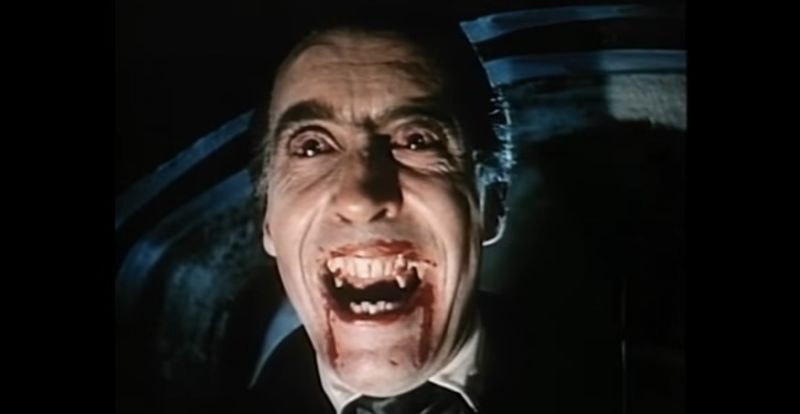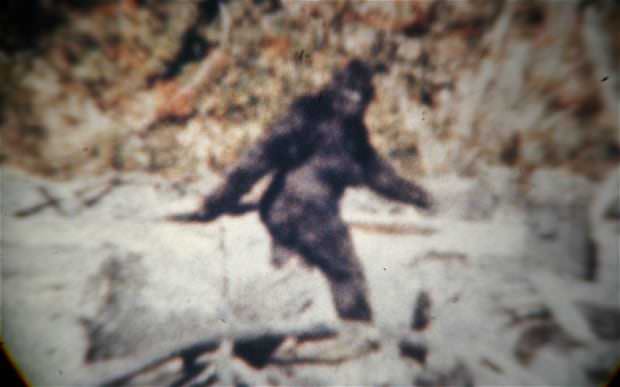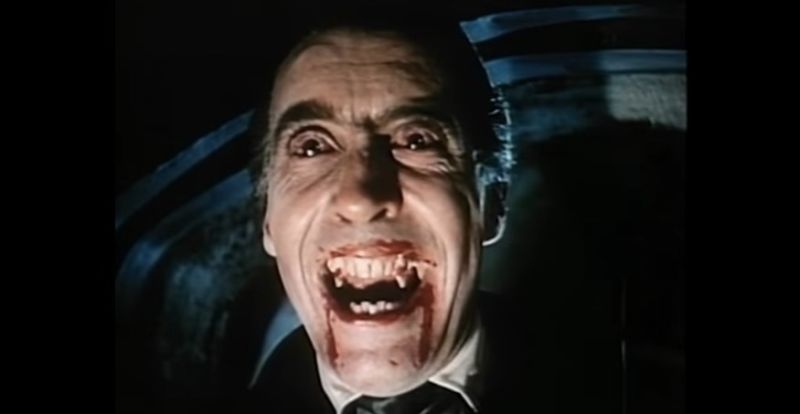The Many Lives of Dracula

The book’s publication in 1897 would become a benchmark moment in the zeitgeist, introducing the world to a character that continues to haunt and delight audiences over a century later. More so, the titular Count’s ongoing presence in media proves that Stoker quite literally created an uncontrollable monster, albeit likely not in the way he intended. From that single source material, the Transylvanian terror’s tale has been adapted or expanded across a multitude of mediums, including fanged forays into cinema, musical theater, radio dramas, and even ballet.
These days, evocation of Dracula’s name doesn’t merely call to mind a work of literature, but rather a whole legacy of fright.
But what, exactly, is the continued draw? In a world full of creatures that go bump in the night, why does Dracula continue to rise above the rest?
Although there are many facets by which to examine the vampire king’s hold on our imaginations, likely the simplest explanation is the most apt: He’s the original.
 At the very DNA of the modern horror villain, one can always find a piece of the Count. The measured approach of Hannibal Lecter’s gentleman villainy, the bold theatricality of Freddy Krueger, the relentless drive of Jason Voorhees…these are all traits displayed by Dracula. It could be argued that Stoker’s infamous vampire set the standard for modern monsters…and we’re inclined to agree.
More so, unlike the Frankenstein Monster, the Wolfman, or other similar contemporaries, Dracula’s wickedness does not come from a place of being misunderstood. The Count does not strive to be a sympathetic creature, instead operating with a clear and conscious goal to execute evil with nearly Machiavellian precision. This is why, in instances in which Dracula is paired alongside other monsters (such as 1987’s The Monster Squad or the recent TV series Penny Dreadful), he is almost always presented as the most deadly and formidable. There is no remorse in the world of Dracula. He relishes his bloodlust and revels in his evil.
…and, to be honest, this is why we love him. The world Dracula inhabits is savage, sexy, and unapologetically delicious. Via the Count, we get an alluring look into a world of dark desire that we cannot help but find enthralling. It’s a vision of evil disguised as something sensual and dreamlike. Even though you know it’s bad for you, how can you possibly turn away?
It’s for those reasons and more that Dracula continues to engage audiences and artists alike. The notion of embracing darkness and giving into one’s base desires has inspired the likes of Andy Warhol, Werner Herzog, Edward Gorey, and more to offer their own unique visions of the Count’s tale, furthering his mythos. Nearly 120 years since the original novel’s publication, the erstwhile Transylvanian has had adventures that have pitted him against Sherlock Holmes, seen him become the Red Baron, and yes, even travel to space. With each new entry, Dracula’s hold on the greater pop culture consciousness increases. And with immortality on his side, he’s showing no signs of stopping.
At the very DNA of the modern horror villain, one can always find a piece of the Count. The measured approach of Hannibal Lecter’s gentleman villainy, the bold theatricality of Freddy Krueger, the relentless drive of Jason Voorhees…these are all traits displayed by Dracula. It could be argued that Stoker’s infamous vampire set the standard for modern monsters…and we’re inclined to agree.
More so, unlike the Frankenstein Monster, the Wolfman, or other similar contemporaries, Dracula’s wickedness does not come from a place of being misunderstood. The Count does not strive to be a sympathetic creature, instead operating with a clear and conscious goal to execute evil with nearly Machiavellian precision. This is why, in instances in which Dracula is paired alongside other monsters (such as 1987’s The Monster Squad or the recent TV series Penny Dreadful), he is almost always presented as the most deadly and formidable. There is no remorse in the world of Dracula. He relishes his bloodlust and revels in his evil.
…and, to be honest, this is why we love him. The world Dracula inhabits is savage, sexy, and unapologetically delicious. Via the Count, we get an alluring look into a world of dark desire that we cannot help but find enthralling. It’s a vision of evil disguised as something sensual and dreamlike. Even though you know it’s bad for you, how can you possibly turn away?
It’s for those reasons and more that Dracula continues to engage audiences and artists alike. The notion of embracing darkness and giving into one’s base desires has inspired the likes of Andy Warhol, Werner Herzog, Edward Gorey, and more to offer their own unique visions of the Count’s tale, furthering his mythos. Nearly 120 years since the original novel’s publication, the erstwhile Transylvanian has had adventures that have pitted him against Sherlock Holmes, seen him become the Red Baron, and yes, even travel to space. With each new entry, Dracula’s hold on the greater pop culture consciousness increases. And with immortality on his side, he’s showing no signs of stopping.
 Proudly, Hammer’s contributions to Dracula’s legacy remain some of the most visible in the Count’s storied history. In addition to the casting of Christopher Lee as Dracula, 1958’s Horror of Dracula would also lay the groundwork for a whole industry of horror franchises that followed. Even as Lee became synonymous with the character for a whole generation, his continued appearances as the Count furthered the vampire’s expanding mythology. Though Horror served as a fairly faithful adaptation of Stoker’s novel, subsequent entries would see Dracula engaging with cults (1969’s Taste the Blood of Dracula), running rampant across modern London (1972’s Dracula A.D. 1972/1973’s The Satanic Rites of Dracula), and even doing martial arts battle in Hong Kong (1974’s The Legend of the Seven Golden Vampires, which saw John Forbes-Robertson replacing Lee as the Count). The varied and eclectic adventures of Dracula in the series not only introduced the character to the modern era of filmgoers, but also helped cement Hammer’s place in the history of horror.
…and it seems that Dracula and Hammer aren’t quite done with each other yet. Recently, a script long thought lost to time, titled The Unquenchable Thirst of Dracula has been unearthed and revived from the dead. Written in the 70s by screenwriter Anthony Hinds (Dracula Has Risen From the Grave, Taste the Blood of Dracula, The Scars of Dracula), the newly recovered tale details an account of Dracula’s travels to India. At one time intended for screen, the script is finally seeing the light of day as a full-cast audio drama directed by Mark Gatiss (Sherlock) that is set to debut this Halloween season.
Of course, that Dracula would return in such a fashion is fitting. In a long history of strange adventures, the one thing that is truly consistent is that you can’t keep the Count down for long.
But, perhaps that’s what we love about Dracula the most: No matter how dark the night, no matter how evil the plot…he’s always there.
To entice.
To seduce.
To keep our blood warm.
…and we wouldn’t have it any other way.
Proudly, Hammer’s contributions to Dracula’s legacy remain some of the most visible in the Count’s storied history. In addition to the casting of Christopher Lee as Dracula, 1958’s Horror of Dracula would also lay the groundwork for a whole industry of horror franchises that followed. Even as Lee became synonymous with the character for a whole generation, his continued appearances as the Count furthered the vampire’s expanding mythology. Though Horror served as a fairly faithful adaptation of Stoker’s novel, subsequent entries would see Dracula engaging with cults (1969’s Taste the Blood of Dracula), running rampant across modern London (1972’s Dracula A.D. 1972/1973’s The Satanic Rites of Dracula), and even doing martial arts battle in Hong Kong (1974’s The Legend of the Seven Golden Vampires, which saw John Forbes-Robertson replacing Lee as the Count). The varied and eclectic adventures of Dracula in the series not only introduced the character to the modern era of filmgoers, but also helped cement Hammer’s place in the history of horror.
…and it seems that Dracula and Hammer aren’t quite done with each other yet. Recently, a script long thought lost to time, titled The Unquenchable Thirst of Dracula has been unearthed and revived from the dead. Written in the 70s by screenwriter Anthony Hinds (Dracula Has Risen From the Grave, Taste the Blood of Dracula, The Scars of Dracula), the newly recovered tale details an account of Dracula’s travels to India. At one time intended for screen, the script is finally seeing the light of day as a full-cast audio drama directed by Mark Gatiss (Sherlock) that is set to debut this Halloween season.
Of course, that Dracula would return in such a fashion is fitting. In a long history of strange adventures, the one thing that is truly consistent is that you can’t keep the Count down for long.
But, perhaps that’s what we love about Dracula the most: No matter how dark the night, no matter how evil the plot…he’s always there.
To entice.
To seduce.
To keep our blood warm.
…and we wouldn’t have it any other way.
 At the very DNA of the modern horror villain, one can always find a piece of the Count. The measured approach of Hannibal Lecter’s gentleman villainy, the bold theatricality of Freddy Krueger, the relentless drive of Jason Voorhees…these are all traits displayed by Dracula. It could be argued that Stoker’s infamous vampire set the standard for modern monsters…and we’re inclined to agree.
More so, unlike the Frankenstein Monster, the Wolfman, or other similar contemporaries, Dracula’s wickedness does not come from a place of being misunderstood. The Count does not strive to be a sympathetic creature, instead operating with a clear and conscious goal to execute evil with nearly Machiavellian precision. This is why, in instances in which Dracula is paired alongside other monsters (such as 1987’s The Monster Squad or the recent TV series Penny Dreadful), he is almost always presented as the most deadly and formidable. There is no remorse in the world of Dracula. He relishes his bloodlust and revels in his evil.
…and, to be honest, this is why we love him. The world Dracula inhabits is savage, sexy, and unapologetically delicious. Via the Count, we get an alluring look into a world of dark desire that we cannot help but find enthralling. It’s a vision of evil disguised as something sensual and dreamlike. Even though you know it’s bad for you, how can you possibly turn away?
It’s for those reasons and more that Dracula continues to engage audiences and artists alike. The notion of embracing darkness and giving into one’s base desires has inspired the likes of Andy Warhol, Werner Herzog, Edward Gorey, and more to offer their own unique visions of the Count’s tale, furthering his mythos. Nearly 120 years since the original novel’s publication, the erstwhile Transylvanian has had adventures that have pitted him against Sherlock Holmes, seen him become the Red Baron, and yes, even travel to space. With each new entry, Dracula’s hold on the greater pop culture consciousness increases. And with immortality on his side, he’s showing no signs of stopping.
At the very DNA of the modern horror villain, one can always find a piece of the Count. The measured approach of Hannibal Lecter’s gentleman villainy, the bold theatricality of Freddy Krueger, the relentless drive of Jason Voorhees…these are all traits displayed by Dracula. It could be argued that Stoker’s infamous vampire set the standard for modern monsters…and we’re inclined to agree.
More so, unlike the Frankenstein Monster, the Wolfman, or other similar contemporaries, Dracula’s wickedness does not come from a place of being misunderstood. The Count does not strive to be a sympathetic creature, instead operating with a clear and conscious goal to execute evil with nearly Machiavellian precision. This is why, in instances in which Dracula is paired alongside other monsters (such as 1987’s The Monster Squad or the recent TV series Penny Dreadful), he is almost always presented as the most deadly and formidable. There is no remorse in the world of Dracula. He relishes his bloodlust and revels in his evil.
…and, to be honest, this is why we love him. The world Dracula inhabits is savage, sexy, and unapologetically delicious. Via the Count, we get an alluring look into a world of dark desire that we cannot help but find enthralling. It’s a vision of evil disguised as something sensual and dreamlike. Even though you know it’s bad for you, how can you possibly turn away?
It’s for those reasons and more that Dracula continues to engage audiences and artists alike. The notion of embracing darkness and giving into one’s base desires has inspired the likes of Andy Warhol, Werner Herzog, Edward Gorey, and more to offer their own unique visions of the Count’s tale, furthering his mythos. Nearly 120 years since the original novel’s publication, the erstwhile Transylvanian has had adventures that have pitted him against Sherlock Holmes, seen him become the Red Baron, and yes, even travel to space. With each new entry, Dracula’s hold on the greater pop culture consciousness increases. And with immortality on his side, he’s showing no signs of stopping.
 Proudly, Hammer’s contributions to Dracula’s legacy remain some of the most visible in the Count’s storied history. In addition to the casting of Christopher Lee as Dracula, 1958’s Horror of Dracula would also lay the groundwork for a whole industry of horror franchises that followed. Even as Lee became synonymous with the character for a whole generation, his continued appearances as the Count furthered the vampire’s expanding mythology. Though Horror served as a fairly faithful adaptation of Stoker’s novel, subsequent entries would see Dracula engaging with cults (1969’s Taste the Blood of Dracula), running rampant across modern London (1972’s Dracula A.D. 1972/1973’s The Satanic Rites of Dracula), and even doing martial arts battle in Hong Kong (1974’s The Legend of the Seven Golden Vampires, which saw John Forbes-Robertson replacing Lee as the Count). The varied and eclectic adventures of Dracula in the series not only introduced the character to the modern era of filmgoers, but also helped cement Hammer’s place in the history of horror.
…and it seems that Dracula and Hammer aren’t quite done with each other yet. Recently, a script long thought lost to time, titled The Unquenchable Thirst of Dracula has been unearthed and revived from the dead. Written in the 70s by screenwriter Anthony Hinds (Dracula Has Risen From the Grave, Taste the Blood of Dracula, The Scars of Dracula), the newly recovered tale details an account of Dracula’s travels to India. At one time intended for screen, the script is finally seeing the light of day as a full-cast audio drama directed by Mark Gatiss (Sherlock) that is set to debut this Halloween season.
Of course, that Dracula would return in such a fashion is fitting. In a long history of strange adventures, the one thing that is truly consistent is that you can’t keep the Count down for long.
But, perhaps that’s what we love about Dracula the most: No matter how dark the night, no matter how evil the plot…he’s always there.
To entice.
To seduce.
To keep our blood warm.
…and we wouldn’t have it any other way.
Proudly, Hammer’s contributions to Dracula’s legacy remain some of the most visible in the Count’s storied history. In addition to the casting of Christopher Lee as Dracula, 1958’s Horror of Dracula would also lay the groundwork for a whole industry of horror franchises that followed. Even as Lee became synonymous with the character for a whole generation, his continued appearances as the Count furthered the vampire’s expanding mythology. Though Horror served as a fairly faithful adaptation of Stoker’s novel, subsequent entries would see Dracula engaging with cults (1969’s Taste the Blood of Dracula), running rampant across modern London (1972’s Dracula A.D. 1972/1973’s The Satanic Rites of Dracula), and even doing martial arts battle in Hong Kong (1974’s The Legend of the Seven Golden Vampires, which saw John Forbes-Robertson replacing Lee as the Count). The varied and eclectic adventures of Dracula in the series not only introduced the character to the modern era of filmgoers, but also helped cement Hammer’s place in the history of horror.
…and it seems that Dracula and Hammer aren’t quite done with each other yet. Recently, a script long thought lost to time, titled The Unquenchable Thirst of Dracula has been unearthed and revived from the dead. Written in the 70s by screenwriter Anthony Hinds (Dracula Has Risen From the Grave, Taste the Blood of Dracula, The Scars of Dracula), the newly recovered tale details an account of Dracula’s travels to India. At one time intended for screen, the script is finally seeing the light of day as a full-cast audio drama directed by Mark Gatiss (Sherlock) that is set to debut this Halloween season.
Of course, that Dracula would return in such a fashion is fitting. In a long history of strange adventures, the one thing that is truly consistent is that you can’t keep the Count down for long.
But, perhaps that’s what we love about Dracula the most: No matter how dark the night, no matter how evil the plot…he’s always there.
To entice.
To seduce.
To keep our blood warm.
…and we wouldn’t have it any other way.


